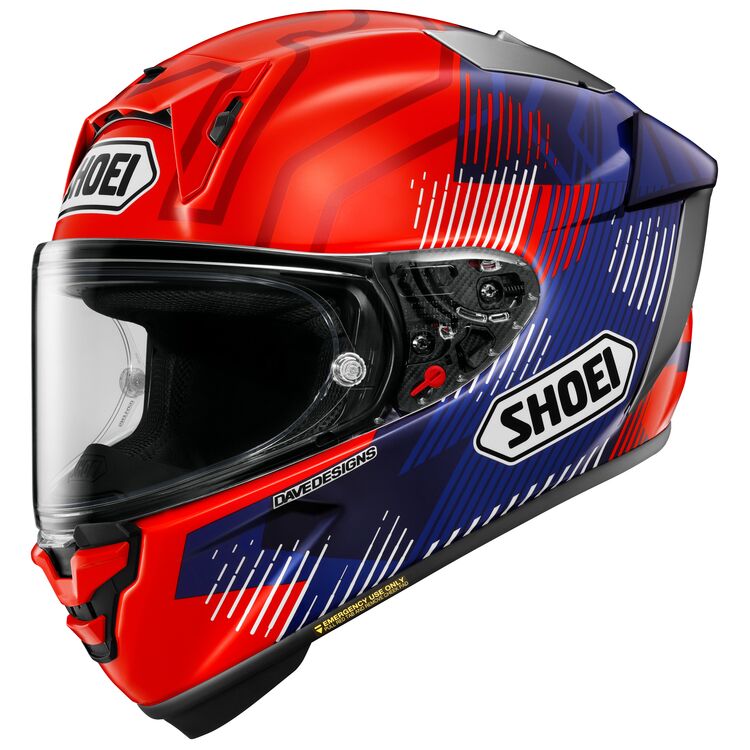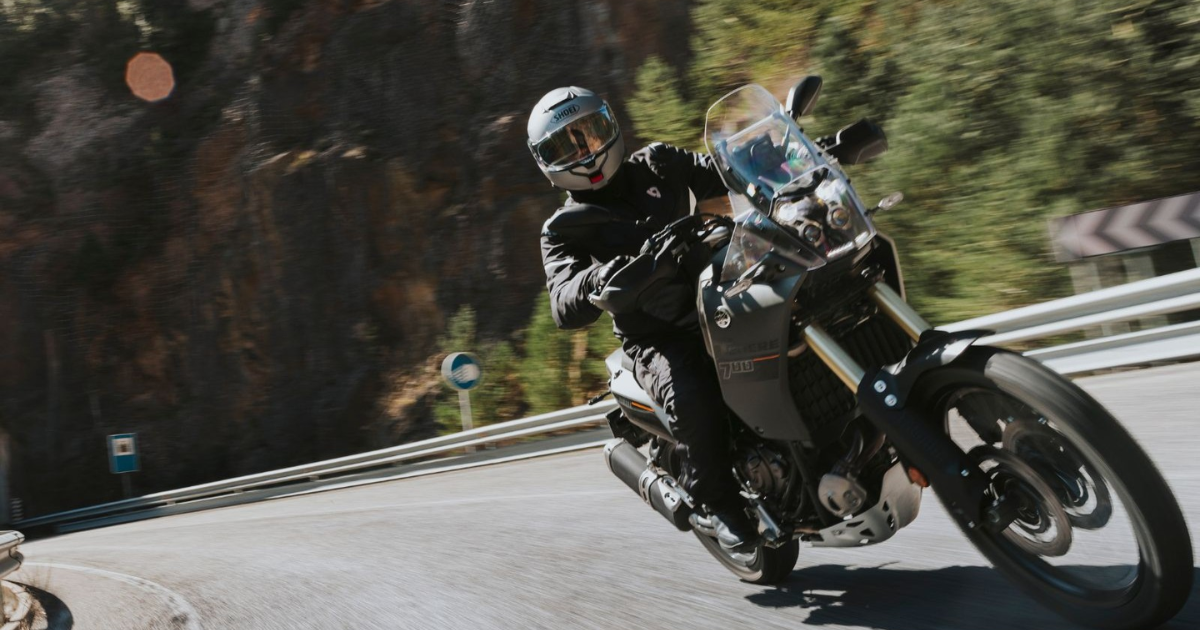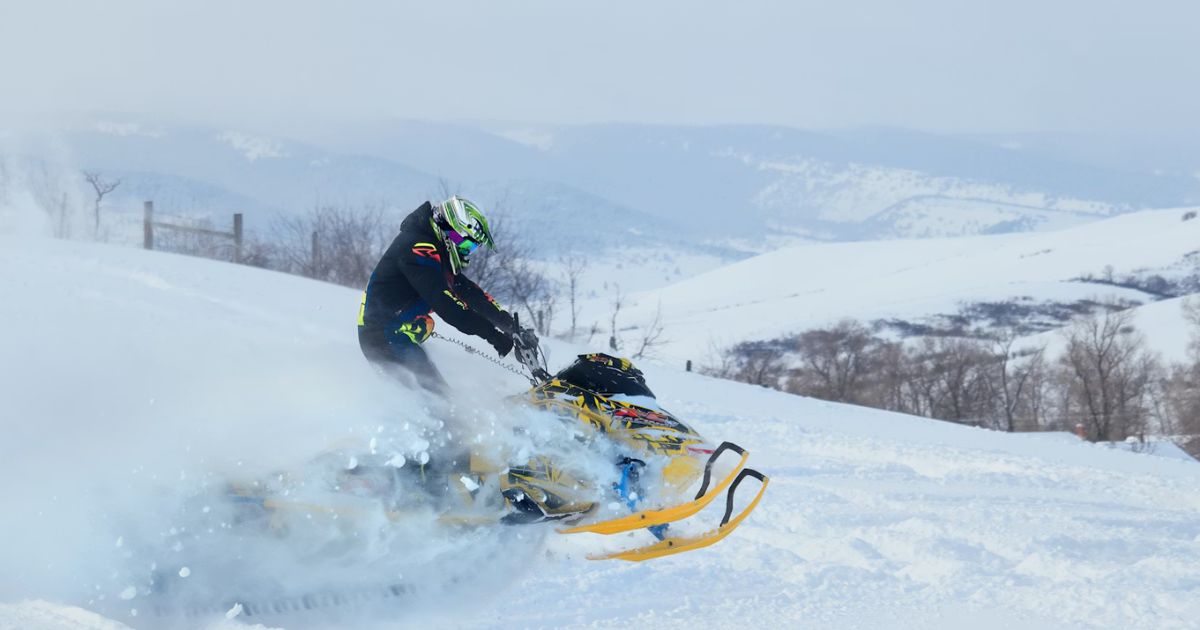
The Best Sport Bike Helmets: Street-Tested, Track-Ready
left for contents
Sport bike riding takes our full focus.
When you’re chasing your line, a shaky lid or a fogged visor can throw you off – not just endangering lap times, but your life.
I found that out at speed last summer. My old lid started catching wind on the straights and felt like it was trying to rip off my head. Ten minutes in and I was cooked, backing off.
That day made it clear: the right helmet lets you stay focused and actually enjoy the ride, not fight through it.
This is an example of why your helmet can’t be an afterthought. It needs to be stable and cool. The right lid frees you up to focus on what matters: the line, the throttle, the next apex.
Forget just looking fast – comfort and safety are top priorities. This guide is about helmets that actually help you ride better, whether you’re chasing lap times or carving your favorite canyon.

Now, let’s cut through the noise with a few hard truths debated in paddocks and forums everywhere:
- The most expensive helmet on the grid isn’t automatically the best choice for your specific needs or head shape. Fit and function beat price tags and fancy paint.
- That hardcore ‘race replica’ might actually hinder aggressive street riding with its compromises on noise and low-speed comfort. Balance is key unless you only ride track.
- Simply counting vents is meaningless for cooling. How they work with aerodynamics at speed is what truly matters when you’re tucked in and working hard.
- Obsessing only over the lightest weight ignores a potentially bigger factor for high-speed riding: aerodynamic stability. Fighting head-shake is exhausting.
Intrigued? Good. Let’s find the helmet that truly complements your machine and your need for speed.
Street vs. Track: Choosing Your Weapon
While all sport bike helmets prioritize performance, there’s a difference between a lid optimized for canyon carving and one built for shaving seconds off lap times. We’ve split our picks into two main camps:
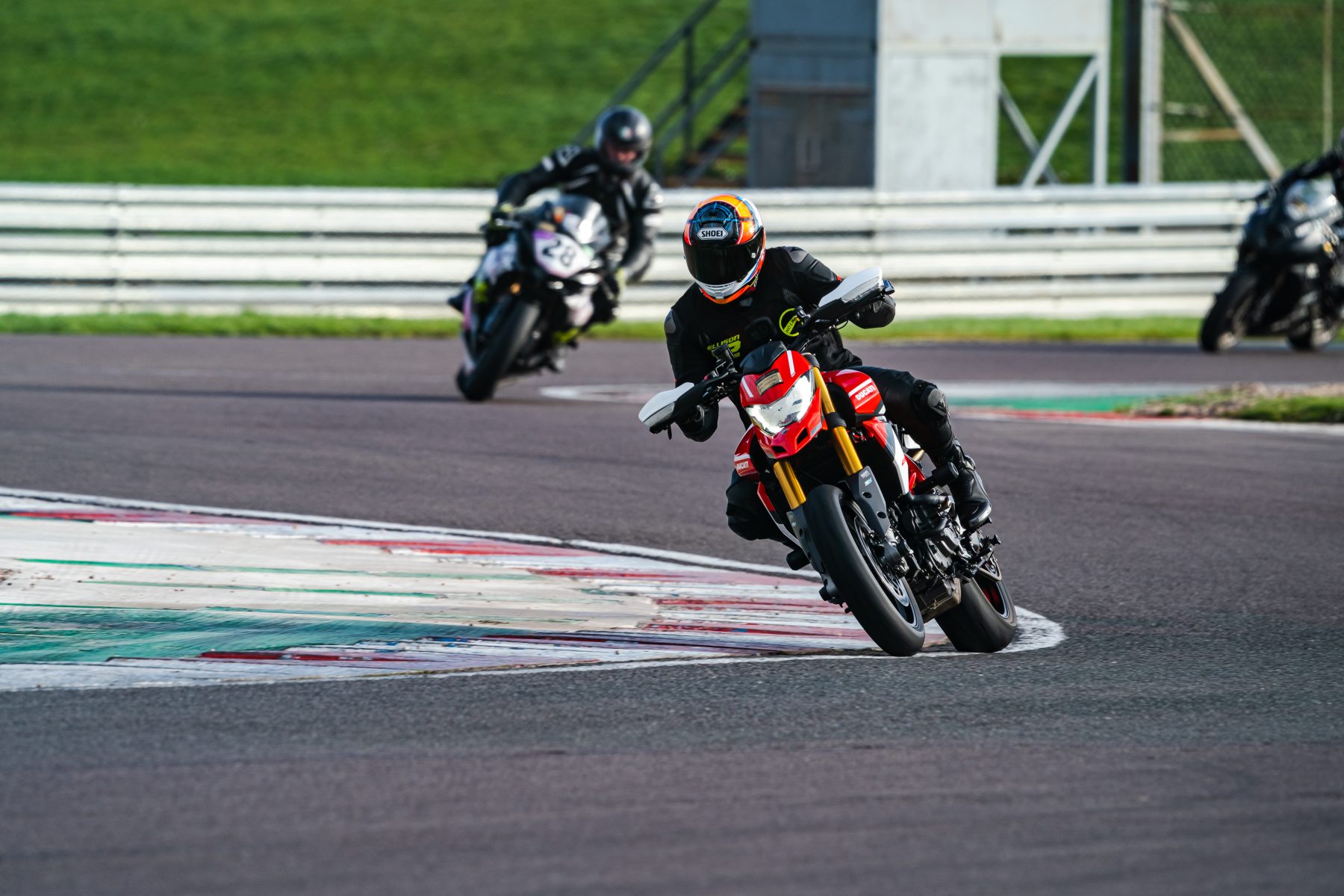
- Best Sport Helmets for the Street: These helmets offer a fantastic blend of performance, comfort, and practicality for high-performance road riding. They typically feature great aerodynamics for highway speeds, effective ventilation, good visibility, plusher interiors, and relatively lower noise levels compared to pure track helmets. They provide excellent protection (often ECE 22.06 rated) but might forgo the absolute extremes of track-specific features for better all-around usability.
- Best Sport Helmets for the Track: Safety and high-speed performance are paramount here. These helmets usually boast FIM homologation (the highest racing standard), aggressive aerodynamics optimized for a full tuck, maximum airflow designed for intense exertion, and often a tighter, race-oriented fit. Features like hydration tube routing and tear-off posts are common. Noise reduction and low-speed comfort are generally secondary considerations.
Let’s dive into our top recommendations for each category.
Best Sport Helmets for the Street
These helmets provide the stability, ventilation, and protection needed for spirited street riding, without the hardcore compromises of pure race lids.
Shoei RF-1400: The Refined All-Rounder
While often categorized under sport-touring, the Shoei RF-1400’s capabilities firmly place it as a top contender for sporty street riding. It blends Shoei’s legendary comfort and refinement with seriously effective aerodynamics and ventilation that work brilliantly outside the track environment.

Compared to the old RF-1200 (which was kind of a gold standard for years), the RF-1400 tightens things up across the board. The shell shape has been tuned for better aerodynamics, with less lift, less drag, and way less of that annoying buffeting at speed. It just feels stable, even when the wind picks up. Shoei added a bit of weight over the 1200, but you’d never notice it in the saddle. The balance is dialed.
What really stands out for me is the comfort. The liner is soft without being squishy, and the cheek pads hug your face in a way that feels secure, not suffocating. Fit is intermediate oval, so it works for a lot of riders. I’d say a good 80 percent of folks will feel at home in this thing. I appreciate how snug it feels around the cheeks, especially on longer rides. It doesn’t shift or flex when you’re head-checking or dealing with crosswinds.
Ventilation has been improved too. The new top vents actually flow air, and the back exhaust is larger, which helps pull heat out of the shell. Even in warmer weather, I haven’t felt like I’m baking inside it. The chin vent is easier to use with gloves, and the whole system feels more streamlined than the previous version.

The visor system also got a solid upgrade. Shoei introduced the CWR-F2 shield on this model, which gives you a nice, wide field of view and comes with a Pinlock insert right in the box. That’s clutch on foggy mornings or humid days. Visibility is crystal clear, no weird distortions at the edges. The center locking tab isn’t my favorite. It takes a bit more effort to pop open, especially with gloves, but it’s a small tradeoff for the overall quality.
The Catch? It lacks the ultimate track-focused features like FIM rating or extreme spoilers found on race replicas. Some riders might prefer the slightly sportier look or potentially lighter weight of competitors. No internal sun visor.

Silver Lining: You get near-track-level stability and ventilation combined with class-leading comfort, quietness (relatively speaking for a sport helmet), and build quality. It’s arguably the best blend for riders who spend most of their time riding fast on public roads. Also, the RF-1400 ranks as our #1 Quietest Helmet.
Alternative Option: For riders on a lower budget, the Bell Qualifier DLX MIPS is a popular choice that punches above its weight. It has a MIPS liner for less rotational injury risk in a crash, and it uses a convenient Transitions photochromic shield (changes tint with exterior light conditions) instead of an internal sun visor. Since it’s only a basic polycarbonate shell, it’s at a much more accessible price point than the RF-1400, though with expected differences in overall refinement and high-speed aerodynamic performance.
One of the top motorcycle helmets for street riding due to its incredible safety ratings, solid build construction, versatile shell for street and track riding, and reasonable price. Long term review here.
- Staff pick at Revzilla
- Quietest helmet on the market
- Excellent build quality
- Thick noise-sealing cheekpads
- Visor seal built like Fort Knox
- Snell certified for track use
- Lacking touring comfort features like drop down sun shield
Our Review: The RF-1400 is a benchmark for a reason. We have a review up from Carl on the site, check it out!
AGV K6S: The Lightweight Street Weapon
If you prioritize shedding grams without sacrificing sporty performance and safety on the street, the AGV K6S is a standout. Building on the success of the K6, the ‘S’ version adds an integrated rear spoiler for enhanced aerodynamics, making this already featherlight helmet even more stable at speed.
The first thing you notice is the lack of weight. The carbon-aramid fiber shell makes the K6S feel incredibly light on your head, reducing neck fatigue significantly during spirited riding or longer journeys. We’ve rounded up the lightest full-face helmets — and the AGV K6S tops the list!

This lightness translates to a feeling of agility, letting you flick the bike side-to-side with less effort. The added spoiler helps keep things planted when you pick up the pace, reducing lift and improving stability compared to less aero-focused lids.
The interior is plush and comfortable, using high-quality Ritmo and Shalimar fabrics that feel great against the skin and manage moisture well. AGV offers different fit profiles, accommodating various head shapes. Visibility is excellent, with a wide Class 1 Optic visor ensuring a clear, distortion-free view. Ventilation is effective, providing good airflow through five adjustable front vents and a rear extractor. It meets the stringent ECE 22.06 safety standard.
The Catch? While stable, the aero might not be as aggressively optimized for triple-digit speeds as dedicated track helmets. Some riders find AGV helmets can run slightly noisier than comparable Shoeis. No internal sun visor (though AGV offers tinted visors).

Silver Lining: You get an exceptionally lightweight, comfortable helmet with enhanced aerodynamics and top-tier safety certifications, making it feel incredibly agile and reducing fatigue on sporty street rides. It looks sharp and feels premium.
Alternative Option: The Scorpion EXO-R1 Air Carbon offers another very lightweight carbon option, often at a lower price, with the added benefit of the AirFit customizable cheek pads.
A lightweight and aerodynamic helmet designed for ultimate comfort and protection, inspired by MotoGP technology.
- Ultra-light composite shell reduces fatigue
- 190° field of view enhances road awareness
- Aerodynamic design with low wind noise
- Excellent ventilation with multi-vent airflow
- Eyeglass-friendly interior and comms-ready
- Vent sliders can be fiddly with gloves
- Compact sizing—double-check shell fit
Our Review: The K6S impressed us with its blend of lightness and performance. We’re aiming for a detailed comparison on It’s Better On The Road soon.
Best Sport Helmets for the Track
When safety margins shrink and speeds climb, these helmets provide the ultimate in protection, stability, and features designed for the racetrack.
Shoei X-15: Track-Focused, Rider-Refined
If you’re serious about track days, this is the kind of helmet that earns its place in your gear bag. The Shoei X-15 is the top-tier race helmet in Shoei’s lineup, and everything about it screams performance. Developed with input from MotoGP riders like Márquez and tested at triple-digit speeds, this lid is built to deliver when you’re on the gas, tucked in, and focused on hitting every apex.

There’s a reason racers trust it – the X-15 just feels right when the pace ramps up. Shoei reworked the shell for better aerodynamics, less lift, less drag, and improved stability, especially when braking hard or hanging off the bike. Even compared to the outgoing X-14, this thing feels more planted. You’re not fighting your helmet, and that translates to more focus and less fatigue through a session.
The ventilation system was clearly designed with race pace in mind. At lower speeds, it’s nothing crazy, but get moving, and it starts dumping air through the five intake vents, with airflow channeling through the EPS liner and even the cheek pads. This helps you stay cooler and more alert, even on hot days. Shoei also added space up front for a hydration setup, which is huge if you’re doing long stints or endurance racing.
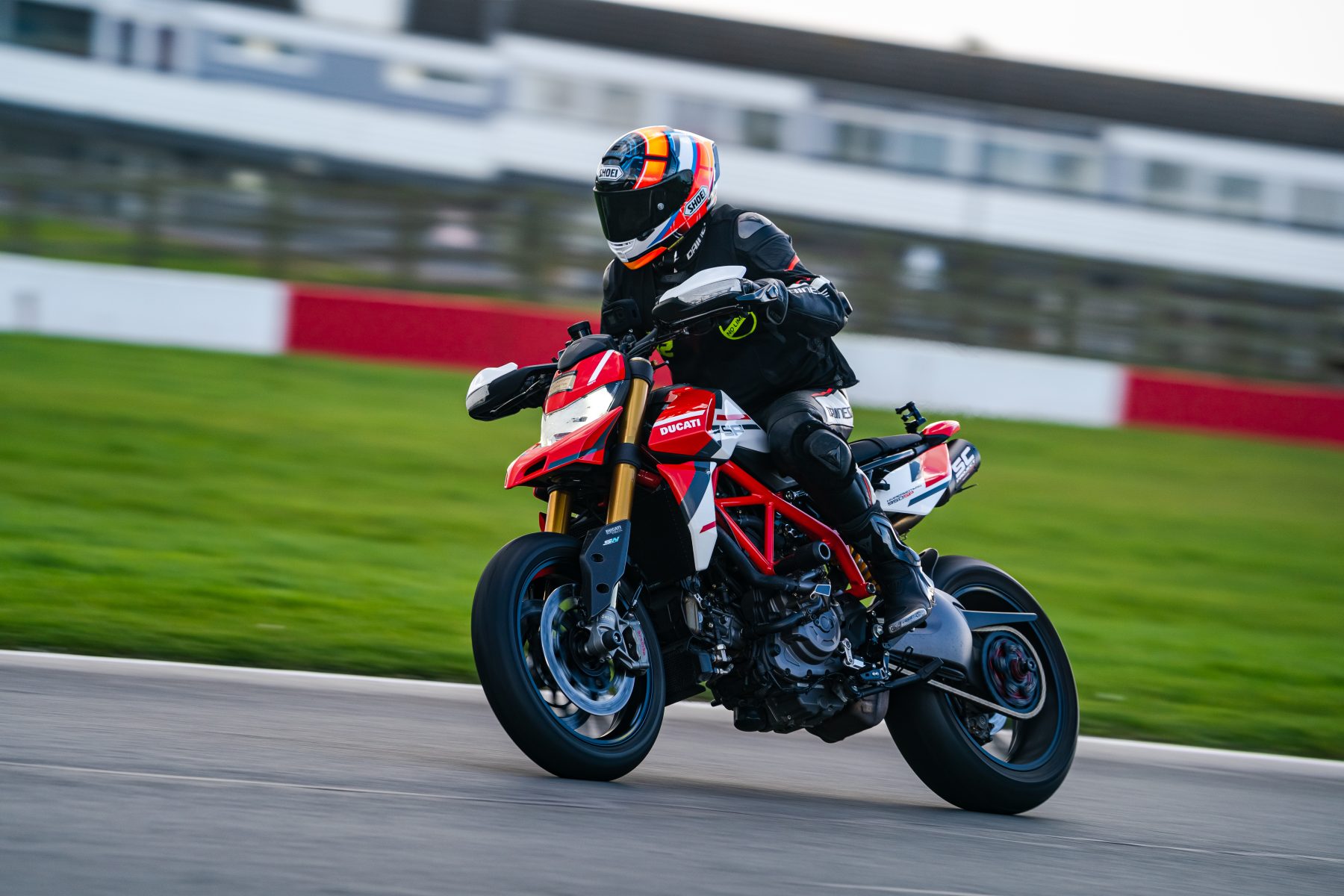
Visibility got a major upgrade too. The new CWR-F2R shield has a taller eyeport and wider view, which makes a difference when you’re fully tucked and looking up through the top of the visor. The optical clarity is excellent, the Pinlock insert is larger than before, and tear-off posts come standard. The locking mechanism has been beefed up too—there’s now a triple-lock system to make sure that visor stays down, no matter what.
The fit and feel are classic Shoei, but with more adjustability than ever. The Max-Dry liner is comfortable, sweat-wicking, and customizable. Shoei added velcro-based micro adjustments and layered foam pads that let you fine-tune the crown fit for a snug, race-ready feel without pressure points. It stays put, even under heavy head movement or when you’re tucked in and moving around the bike.
The Catch? It’s loud. That’s to be expected from a helmet with this much airflow and aggressive shaping. You’ll definitely want earplugs. And while it’s one of the most refined race helmets out there, it’s not built for cruising or commuting. The ventilation and aerodynamics are made for high speeds.

Silver Lining: You’re getting arguably the most refined FIM-homologated helmet available, blending cutting-edge aero and safety with exceptional build quality and fit customization. It inspires confidence and performs flawlessly on track.
Alternative Option: The Alpinestars Supertech R10 offers a fresh contender in the premium track helmet space. With its race-focused design, advanced aerodynamics, and MotoGP pedigree, it’s built for high-speed performance. While newer to the scene than some rivals, it’s quickly gaining attention among riders who want cutting-edge protection and tech without compromising on style.
The Shoei X-15 was honed on the track for an aerodynamically refined racing helmet designed for ultimate speed and performance. Available in many colorways, including ones sported by Marc Marquez himself!
- Enhanced aerodynamics with reduced drag and lift
- Advanced ventilation system with optimized airflow
- Included Pinlock and posts for tear-offs
- Premium price point
Our Review: The X-15 is a proven performer at the highest levels, and we have a long term review of the older UK version (the X-Spirit III) by our contributor HyperMotardKing. A long-term track test is planned. For now, you can check our rundown of Shoei helmets.
AGV Pista GP RR: The Purebred Racer
For riders prioritizing absolute aerodynamic performance and MotoGP pedigree above all else, the AGV Pista GP RR remains the icon. It’s FIM-homologated and designed with a singular focus: to be as stable and efficient as possible when cutting through the air at extreme speeds.

The Pista GP RR’s aggressive shape and prominent biplano rear spoiler are instantly recognizable and incredibly effective. In a full tuck, this helmet provides unparalleled stability, minimizing buffeting and allowing the rider to conserve energy and maintain focus. It feels like it becomes one with the airflow at speed. The 100% carbon fiber shell keeps weight incredibly low.
The huge Ultravision Class 1 Optic visor gives an expansive view, critical for track awareness. The metal vents flow enormous amounts of air, essential for cooling during demanding race conditions, and it comes hydration-system ready. The race-focused interior provides a very snug, secure fit designed specifically to prevent movement at speed, tunable with AGV’s adaptive fit system.

The Catch? The price is astronomical (no wonder it made it into our list of Most Expensive Motorcycle Helmets). Also, it is extremely loud by design. The ventilation requires high speed to be truly effective. The uncompromising race fit isn’t suitable for casual riding, and the build can feel less plush than the Shoei.

Silver Lining: You get a helmet engineered with MotoGP-level technology for maximum aerodynamic stability and safety on track. It’s a specialized tool for racers and serious track day riders seeking the ultimate edge.
Alternative Option: The HJC RPHA 1N provides FIM-homologated performance with excellent aero and ventilation at a significantly lower price point, though perhaps without the ultimate bleeding-edge feel or iconic status of the Pista.
The pinnacle of race helmet engineering, this lid is used to protect the heads of some of the most famous athletes in motorcycle history.
- 100% carbon fiber
- Secure visor lock system
- Pinlock included and tear-off ready
- Literally used in MotoGP
- Very expensive
- Not commuter-friendly
- High wind noise
Our Review: Owning a Pista GP RR is a statement. We hope to be adding more first-hand thoughts about it to ItsBetterOnTheRoad.com.
Sport Helmet Comparison: Street vs. Track Focus
| Feature | Shoei RF-1400 | AGV K6S | Shoei X-15 | AGV Pista GP RR |
| Primary Focus | Street Sport, Comfort | Street Sport, Lightweight | Track & Aggressive Street | Ultimate Track Performance |
| Shell Material | Multi-Ply AIM+ Matrix | Carbon-Aramid Fiber | Multi-Ply AIM+ Matrix | 100% Carbon Fiber |
| Safety Certs | ECE 22.06, DOT, SNELL | ECE 22.06, DOT | FIM, ECE 22.06, DOT, SNELL | FIM, ECE 22.06, DOT |
| FIM Rated? | No | No | Yes | Yes |
| Approx. Weight | Medium (~3.6 lbs) | Very Light (~3.0 lbs) | Medium (~3.5 lbs) | Light (~3.2 lbs) |
| Aero Emphasis | High Speed Stability | Stability, Low Drag | Extreme Stability, Low Lift | Max Stability (Tuck) |
| Noise Level | Relatively Quiet | Moderate | Moderate-Loud | Loud |
| Key Comfort Feature | Plush Liner, Fit | Lightweight Feel | Custom Fit Interior | 360° Adaptive Fit |
| Price Range | $$$ (Upper Mid-Range) | $$$ (Upper Mid-Range) | $$$$ (Premium) | $$$$$ (Ultra Premium) |
| Get One | Check Price | Check Price | Check Price | Check Price |
Note: Weights are approximate and vary by shell size. Noise levels are subjective and relative within the sport helmet category. Price ranges are relative.
Buying Guide: Choosing Your Sport Bike Helmet
Picking the right lid involves more than just cool graphics. For sport bike riding, prioritize these factors based on your primary use (Street vs. Track):
- Safety First (Non-Negotiable):
- Certifications: ECE 22.06 is the modern standard to look for on all helmets. SNELL M2020R adds another layer of rigorous testing. For track use, FIM homologation is highly recommended and required for many racing organizations.
- Rotational Protection: Systems like MIPS add safety against certain impacts.
- Emergency Cheek Pads: Essential for both street and track.

- Aerodynamics & Stability: Crucial for all sport riding, but especially track. Look for wind-tunnel designs and spoilers. Track helmets prioritize stability in a deep tuck. Street helmets need stability in more varied (though still aggressive) positions.
- Fit is Paramount: Snug and secure, no pressure points. Track fits are often tighter. Ensure it matches your head shape. Custom padding or systems like AirFit help. Double D-rings are standard.
- Field of Vision: Wide vertical and peripheral views are vital for both. Track riders benefit most from tall eyeports for visibility when tucked. Optically correct visors and anti-fog (Pinlock) are key. Tear-off posts are a track necessity.
- Ventilation: Track helmets need maximum airflow at high speeds. Street sport helmets need good airflow that also works reasonably well at lower speeds and doesn’t create excessive noise.
- Weight & Balance: Lighter reduces fatigue. Carbon/composite shells help. Balance is critical for how weight feels.
- Noise & Comfort: Street riders should weigh noise levels and liner plushness more heavily. Track riders typically prioritize performance over quietness (always wear earplugs on track) and accept a less plush, more secure-feeling liner.
- Track vs. Street Needs Recap: Be honest. If you ride 95% street, a dedicated track helmet’s compromises (noise, cost, potentially lower comfort) might not be worth it. A high-end street sport helmet (like the RF-1400 or K6S) might be better. If you’re serious about track days or racing, investing in a dedicated track helmet (X-15, Pista GP RR, RPHA 1N) makes sense.
Choosing a sport bike helmet is an investment in your safety, comfort, and performance. Consider your primary use, your budget, and prioritize fit above all else.
Try helmets on whenever possible, wear them for several minutes, and mimic your riding position.
Find the lid that disappears on your head, letting you focus entirely on the thrill of the ride.
Related

Carbon Fiber Modular Helmets: Ultimate Flip-Up Lids
Discover carbon fiber modular helmets that deliver flip-up convenience, lightweight strength, and serious protection for every ride.



